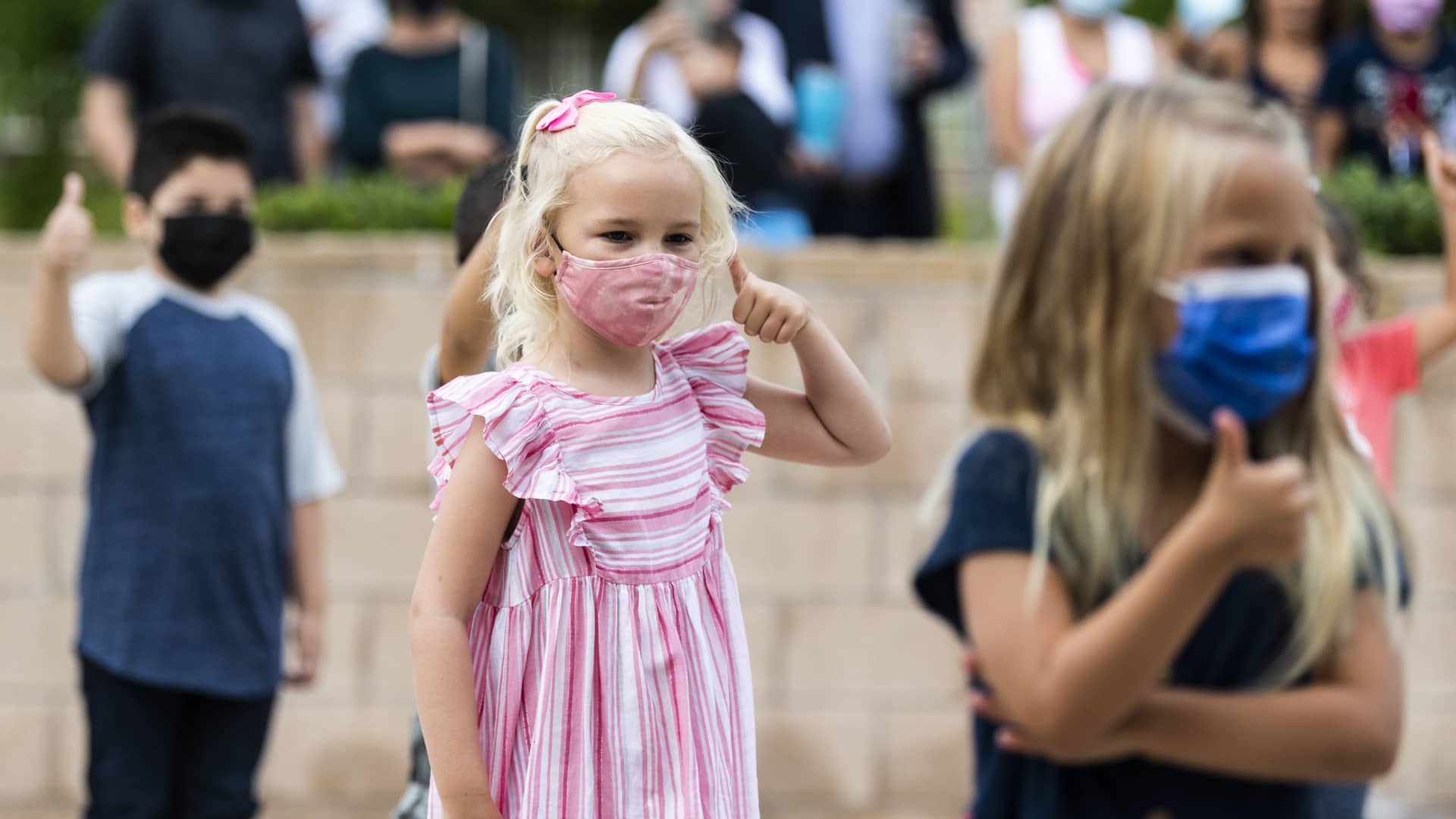Moderna and Pfizer’s Covid-19 vaccines for infants through preschoolers have moved a step closer to authorization by the Food and Drug Administration.
The FDA’s committee of independent vaccine experts unanimously voted to recommend the shots for use in the youngest children after weighing how safe and effective they are during an all-day public meeting.
The FDA will likely accept the committee’s guidance and quickly authorize the shots. The Centers for Disease Control and Prevention then has to sign off on the vaccines before pharmacies and doctors’ offices can start administering them to the kids.
Parents will likely be able to get their kids immunized as soon as Tuesday, though appointments might be limited at first as the vaccination program ramps up, according to Dr. Ashish Jha, who oversees the White House’s response to the pandemic.
Covid is generally less severe in children than adults. However, hospitalizations of kids under age 5 spiked during the omicron wave, hitting the highest level of the pandemic. The hospitalization rate during omicron was as bad or worse for these kids than any recent flu season, according to the CDC.
Covid has killed 202 six-month to 5-year-olds since January 2020. Children under age 5 are the only age group left in the U.S. not eligible vaccination. Many parents have been waiting months for the FDA to authorize the shots.
“We have to be careful that we don’t become numb to the number of pediatric deaths because of the overwhelming number of older deaths. Every life is important,” Dr. Peter Marks, head of the FDA’s vaccine division, told the committee.
“For those who have lost children to Covid-19, our hearts go out to them because each child that’s lost essentially fractures a family,” Marks said.
Pfizer vs. Moderna vaccines
Pfizer and Moderna’s vaccines for the youngest kids differ in a number of ways. Pfizer’s three shots appear more effective than Moderna’s two shots based on the available data. Both vaccines are safe with side effects similar to the common cold, according to FDA presentations.
Pfizer’s vaccine is administered in three doses for kids ages six months to 4-years-old. The shots are dosed at 3 micrograms, one-tenth of what adults receive.
Pfizer’s three-dose vaccine was about 80% effective at preventing illness from omicron, the dominant variant in the U.S. Dr. Doran Fink, a senior official in the FDA’s vaccine division, said the effectiveness of Pfizer’s vaccine after dose three is an imprecise estimate that is subject to change as more data becomes available.
The third shot is crucial for Pfizer’s vaccine because two doses offered very little protection. The FDA had originally sought to fast track the first two doses in February, but Pfizer postponed its submission because the data wasn’t good enough.
Moderna’s vaccine is administered in two doses for kids six months to 5-years-old. The shots are dosed at 25 micrograms, one-fourth of what adults receive.
Moderna’s two-dose vaccine was about 51% effective at preventing illness from omicron for kids six months to 2-years-old, and about 37% effective for kids ages 2 to 5-years-old.
Moderna plans to publish data on a third dose targeting the omicron variant in this age group over the summer and ask the FDA to review that data as soon as possible, according to Jacqueline Miller, an executive with the company.
“However, as children under 4 have had the greatest increase in their risk of hospitalization due to Covid-19 during the omicron surge, initiating this vaccination series now is vital to start protecting children this summer,” Miller told the committee. Moderna expects two doses will protect against severe disease from omicron at similar levels observed in adults, she said.
The most common side effects of both vaccines are pain at the injection site, irritability and crying, loss of appetite and sleepiness. Very few children who received either vaccine developed a fever greater than 102 degrees Fahrenheit, or 39 degrees Celsius. There were no cases of myocarditis, a type of heart inflammation, among the kids in Pfizer and Moderna’s trials.
This is a developing story. Please check back for updates.
